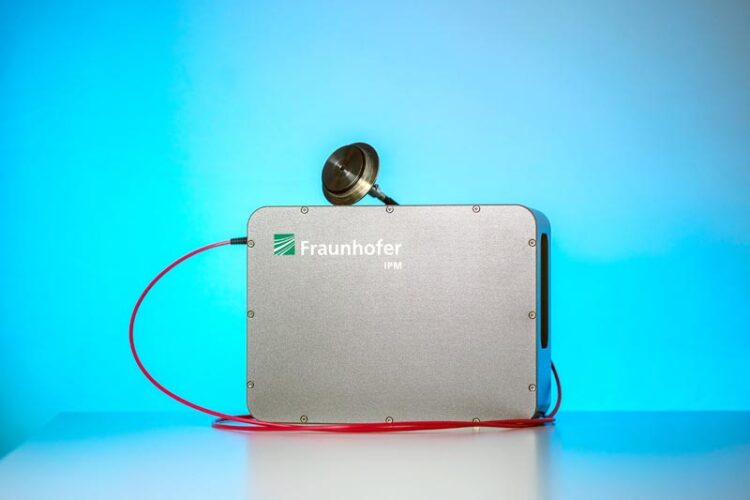Fiber-based sensor for demand-based cleaning of closed food processing systems

F-Fiber: Der faserbasierte Fluoreszenz-Sensor ermöglicht den Einblick in geschlossene Behälter – ohne vollen optischen Zugang. Das millimeterfeine Faserende wird über einen Flansch in die Behälterwand integriert und misst dort den Grad des Foulings, sodass Reinigungsroutinen dynamisch angepasst werden können.
© Fraunhofer IPM
In the food processing industry, closed production systems are cleaned according to strictly defined specifications – and often applying unnecessarily large quantities of chemicals. A fiber-optical fluorescence sensor developed at Fraunhofer IPM measures deposits in closed containers in a minimally invasive manner, thus enabling cleaning processes to be controlled and adapted to the actual degree of fouling.
In the food processing industry, high hygiene requirements apply. The cleaning of production facilities must be completely reliable in order to guarantee the safety of food products. For closed containers or pipes in which, for example, milk, beer, or juices are stored or transported, fixed cleaning routines apply. „The more, the better“ is the general rule in this case: cleaning agents, water, energy, as well as the cleaning time are very generously calculated in order to comply with the strict quality regulations. This safety margin is not only ecologically questionable but also economically unfavorable, because it causes unnecessary delays in the production process.
Minimally invasive: Millimeter-fine sensor tip detects actual contamination
The „F-Fiber“ sensor developed at Fraunhofer IPM makes it possible to adapt the cleaning of closed vessels, known as Cleaning in Place (CIP), to the actual degree of contamination. F-Fiber consists of an optical fiber measuring one millimeter in diameter, which is embedded in a stainless-steel ferrule. The fiber tip is integrated directly into the container wall of a food tank or food-conveying pipe. Alternatively, it can be attached to an existing connector using a flange. All further hardware components of the measuring system are located outside the production unit and are connected via the fiber.
At the inner wall of the tank or tube, the fiber tip is flushed by the tank or tube content. Over time, molecules accumulate on the sensor tip as well as on the surrounding tank wall, forming an unwanted deposit. The organic deposit emits fluorescence when excited with UV light via the sensor fiber. The emitted fluorescence is guided back onto a highly sensitive detector via the same fiber and evaluated. From the strength of the fluorescence signal, conclusions can be drawn about the degree of fouling. Based on these measured values, the cleaning process can be triggered and adjusted in real time – and this is possible for many different types of food soil that can even occur during the same production process.
Wissenschaftliche Ansprechpartner:
Dr. Alexander Blättermann Phone +49 761 8857-249, alexander.blaettermann@ipm.fraunhofer.de
Weitere Informationen:
http://www.ipm.fraunhofer.de/en Fraunhofer Institute for Physical Measurement Techniques IPM, Freiburg/Germany
Media Contact
All latest news from the category: Life Sciences and Chemistry
Articles and reports from the Life Sciences and chemistry area deal with applied and basic research into modern biology, chemistry and human medicine.
Valuable information can be found on a range of life sciences fields including bacteriology, biochemistry, bionics, bioinformatics, biophysics, biotechnology, genetics, geobotany, human biology, marine biology, microbiology, molecular biology, cellular biology, zoology, bioinorganic chemistry, microchemistry and environmental chemistry.
Newest articles

First-of-its-kind study uses remote sensing to monitor plastic debris in rivers and lakes
Remote sensing creates a cost-effective solution to monitoring plastic pollution. A first-of-its-kind study from researchers at the University of Minnesota Twin Cities shows how remote sensing can help monitor and…

Laser-based artificial neuron mimics nerve cell functions at lightning speed
With a processing speed a billion times faster than nature, chip-based laser neuron could help advance AI tasks such as pattern recognition and sequence prediction. Researchers have developed a laser-based…

Optimising the processing of plastic waste
Just one look in the yellow bin reveals a colourful jumble of different types of plastic. However, the purer and more uniform plastic waste is, the easier it is to…



